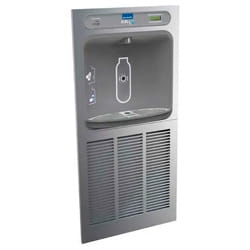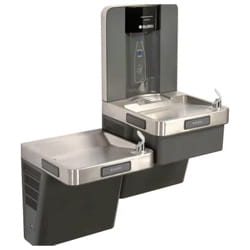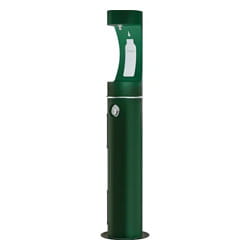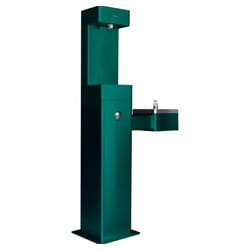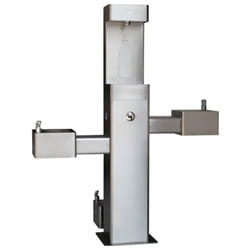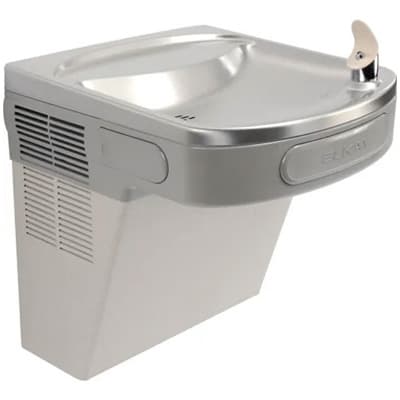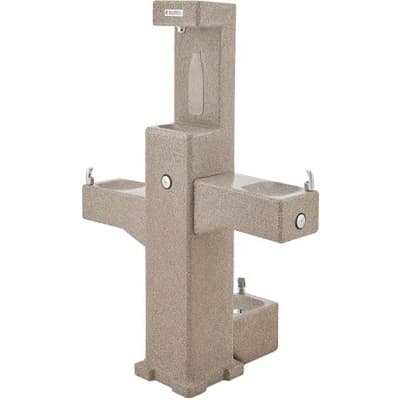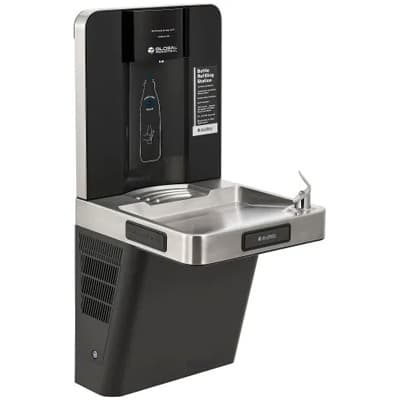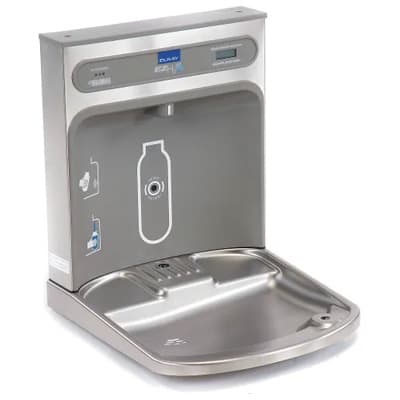Hydration and sustainability. Two words that are a huge part of the zeitgeist right now. Wherever you look, there is a focus on not only getting the right amount of water every day[1] (15.5 cups for men, and 11.5 cups for women), but getting it without doing harm to the environment. With the focus being placed firmly on refillable bottles instead of single-use bottled water, water bottle filling stations are ideally suited to this goal.
So, What Exactly Is a Bottle Fill Station?
The easiest way to describe one is a filtered water fountain that pours water from the top down, much like most modern refrigerators have at home. Trigger a sensor, press a button or push a flap and cool, refreshing water will be dispersed to fill a cup, mug, or reusable bottle. They are often paired with a traditional drinking fountain.
Where Are Water Bottle Filling Stations Increasingly in Demand?
Bottle fill stations have come a long way. The concept of the water bottle filler station dates back to 1922[2] as a response to something called the “drinking water problem” in New York and other major urban areas. With 5-gallon bottled water jugs cluttering hallways and office buildings, primarily due to the poor quality of municipal drinking water, the creation of getting filtered water on tap at any time was a critical invention.
Fast-forward to today and you can now find bottle fill stations in a huge variety of different places. They’re tremendously popular in gyms and leisure centers, where patrons are drinking serious amounts of water due to physical activity and hydration needs. Hydration stations (including outdoor water filling stations) can also be seen all over
- College campuses
- High schools
- Public parks (including pet-friendly water stations at dog parks)
- Office buildings
- Airports
- Hotels
- Shopping malls
- Restaurants and coffee shops
- Spas and resorts
- Golf courses
- Campgrounds
Why Has Demand Increased So Much (and Why Should You Care)?
Let’s start with the why, and by far one of the biggest reasons bottle fill stations have become so sought after by employers, municipalities, educators and more. It’s sustainability.
Being environmentally-conscious is top of mind now for corporations and consumers and has been for some time. Every year new data comes out showing the plastic waste that’s being generated by the bottled water industry. Some 80% of empty plastic water bottles end up in landfills, far more than anyone thinks is reasonable, and it takes up to 1,000 years for a plastic water bottle to decompose[3].
The overwhelming response has been a push to refillable bottles and sustainable water solutions. (It’s also the reason more people turn to small water bottles, and even mini water bottles, as they’re conscious of their plastic use). Consumers across the globe are ready to act, and the stats are undeniable[4]
- 86% of consumers among younger generations (<45) showed a willingness to pay more for sustainable packaging.
- 57% of consumers are "less likely" to buy products in harmful packaging.
- 74% of consumers said they would be interested in buying products that come in refillable packaging.
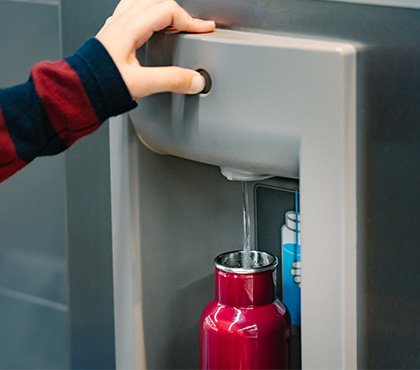
-->{C}
 -->{C}
-->{C}